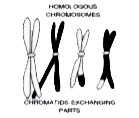Name and define the phenomenon due to which disc and gold leaves acquire charge.
Step-by-Step Solution:
1. Identify the Phenomenon: The phenomenon due to which the disc and gold leaves acquire charge is known as Electrostatic Induction.
2. Define Electrostatic Induction: Electrostatic induction is defined as the process in which a charged body is brought near an uncharged body without any physical contact, causing the uncharged body to acquire a charge.
3. Explain the Process: When a charged object (like a charged rod) is brought close to a neutral object (like a gold leaf), the electric field of the charged object influences the distribution of charges within the neutral object. This results in one side of the neutral object becoming positively charged and the other side becoming negatively charged.
4. Result of the Process: As a result of this charge separation, if the neutral object is conductive (like the gold leaves), it can exhibit a net charge and will respond to the presence of the charged object, such as moving or repelling.
Similar Questions
Name the phenomenon due to which the sun appears reddish at sunset.
View SolutionName the phenomenon due to which the sun appears reddish at sunset
View SolutionName the phenomenon on which an a.c. dynamo works.
View SolutionName the phenomenon by which 'rapid speciation' can take place.
View SolutionThe diagram given below represents a certain phenomenon occurs during meiosis :

Name of the phenomenon
Define the phenomenon
State the difference between chromosome and chromatid
View SolutionName the phenomenon through which water moves over short distances in plants .
View SolutionName the following:
The pigment which gives green colour to the leaves.
View SolutionThe phenomenon due to which white light splits into seven colours on passing through a prism is called spectrum.
View SolutionName the following:
The phenomenon by which dark coloured moth originated from light coloured moth.
View SolutionName the phenomenon in which drops of water coze out from the margins or tips of leaves
View Solution
